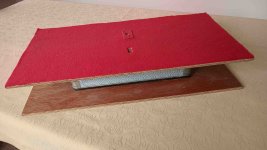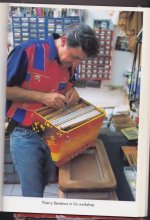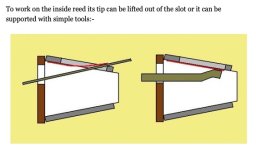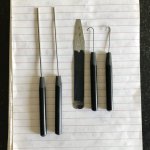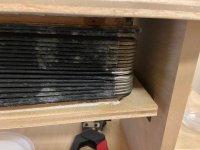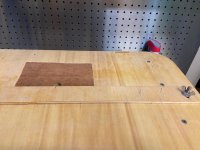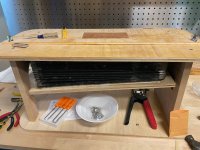AlicePalace
Member
Hello, helpful people. I picked up a cheap, beat up old Hohner Carmen yesterday with the intention to (a) use the bellows in a DIY tuning table, and (b) practice repairs on it. I’ve poked around inside and have removed the bellows, and I note there’s a big-ol’ hole in one of the bellows corners (picture attached, you can see light shining thru). Just thought I’d check with y’all to make sure it’s okay for me to just slap some duct tape (or something) on it because it’s just going into a tuning table. Yes?
I find it interesting that the reeds themselves (not the leathers, not the wax, just the reeds) seem in better shape than the (somewhat rusty) ones in the Larenti accordion I’m trying to fix up. It shows how much of a difference it makes to store accordions in a dry vs. wet environment. The wax has given up and there were three detached reeds just free-riding around the bass compartment (one is missing a leather valve, and I don’t know where that has gotten to), along with a mysterious, triangular piece of paper. This will give me some good practice for waxing reeds back on. I appreciate the fact that Hohner marked the outer side of the reed with a T so it’s easy to know which way to attach it.
Anyway, TIA for your advice on the bellows.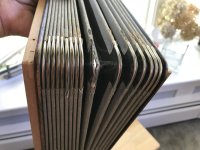

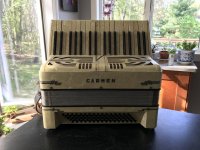
I find it interesting that the reeds themselves (not the leathers, not the wax, just the reeds) seem in better shape than the (somewhat rusty) ones in the Larenti accordion I’m trying to fix up. It shows how much of a difference it makes to store accordions in a dry vs. wet environment. The wax has given up and there were three detached reeds just free-riding around the bass compartment (one is missing a leather valve, and I don’t know where that has gotten to), along with a mysterious, triangular piece of paper. This will give me some good practice for waxing reeds back on. I appreciate the fact that Hohner marked the outer side of the reed with a T so it’s easy to know which way to attach it.
Anyway, TIA for your advice on the bellows.




